Late Night Hike
Last night was going to be my only night in the field in Antarctica so I stayed up late and took a hike along the shore of Lake Hoare to the Seuss GlacierA mass of ice that persists for many years and notably deforms and flows under the influence of gravity.. It was a beautiful walk and an impressive glacier. I returned to camp early this morning and only had a short night's sleep but it was totally worth it.
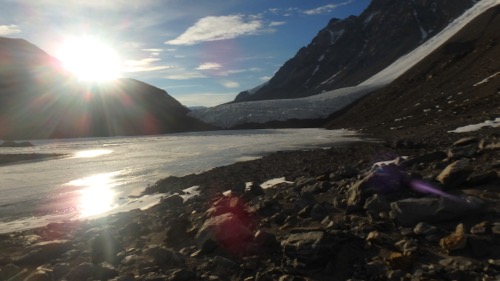
Canceled Flight
When I woke up this morning I found out that the weather in McMurdo had reached Condition 2 and there would be no flights today. That means we get to spend a second night at Lake Hoare. We need to get back to the lab to process samples but I am happy to spend another night here at Lake Hoare. Canceled flights and shifting schedules are just part of the normal routine here in Antarctica. We are completely at the mercy of the weather.
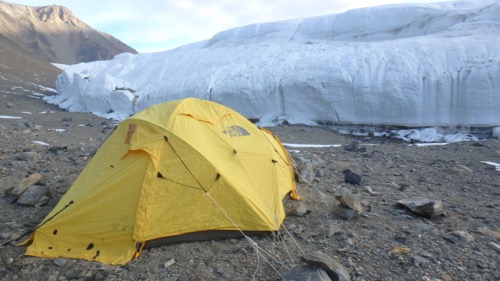
Seuss and the Defile
With the extra time at Lake Hoare we decided to take a hike up to some large ventifacts. Ventifacts are stones that have been shaped and eroded by wind and windblown sand. We took the same route I walked last night but we continued past the Seuss glacier through the Defile which is narrow gap between the end of the glacier and the talus slope on the other side.
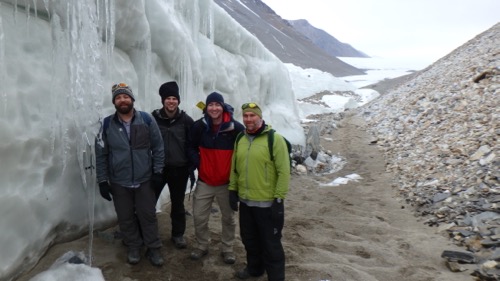
Penguins and Seals in the Dry Valleys
While on the trail we found a freshly dead Adelie penguin, some additional penguin bones, and two seal mummies. Some of the penguins and seals that mistakenly wander up into the dry valleys don't make it back out. This penguin became food for a South Polar Skua that has been picking at the frozen carcass. We found feathers scattered along the shore of the lake leading up to the dead penguin. It is possible that the skua chased the penguin and hastened its death.
The seal mummies are sometimes thousands of years old. The two seals we found today were both in the lake; one of the seals was partially in and the other was completely submerged. The dead bodies of the seals act like fertilizer in the water allowing organisms to live and grow in the area right around the carcass. There were visible algal blooms in the area right around the seals.
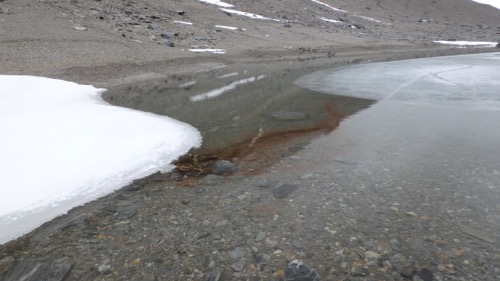
Ventifacts
The ventifacts are about 500 meters above the Defile. A steep climb up the slope and we reached a big basin with several huge boulders scattered around. These granite boulders have been sandblasted by the wind into unusual shapes. The rocks stood as monuments to the strong winds of Antarctica. It was cold and windy in the basin with the ventifact so it felt nice to descend back down the slope and return to the shore of Lake Hoare where the winds were a little more calm.
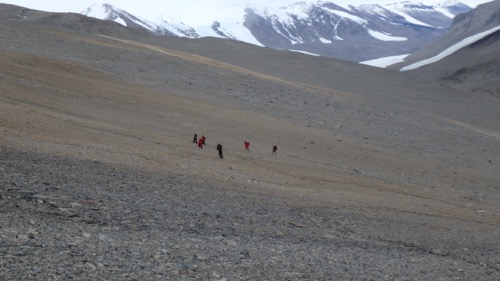
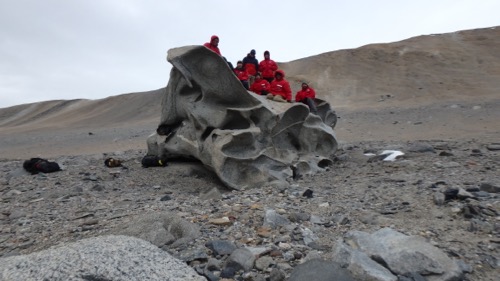
The hike to the ventifacts and back was about 7.5 hours, we returned just in time for an amazing lasagna dinner prepared by the camp managers Rae Spain and Renee Noffke. After dinner and cleanup we played a couple of games and then everyone headed off to bed. What a great place to be stuck with a weather delay.
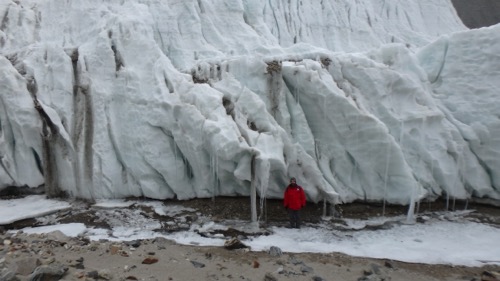


Comments